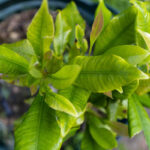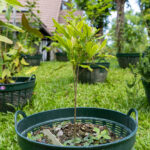มังคุด (Mangkhut)
Family: Clusiaceae (Guttiferae)
Garcinia mangostana, known worldwide as the Mangosteen, is an evergreen tropical tree native to Southeast Asia. It is famous both as a delicious fruit and as a traditional medicinal plant. The tree bears thick, leathery leaves and produces round, purple fruits containing juicy white segments. In Thai herbal tradition, the pericarp—the thick purple rind—is the most important medicinal part, valued for its cooling and anti-inflammatory properties.
Botanical Characteristics
Mangosteen trees grow slowly and can reach up to 10–25 meters in height. The leaves are glossy, dark green, and opposite, with young shoots showing a reddish tint. The tree thrives in warm, humid conditions and deep, well-drained soil. It is often planted in southern Thailand, where rainfall is abundant and soil acidity favors growth.
Use in Thai Traditional Medicine
In Thai traditional medicine, มังคุด (Mangkhut) is used to treat skin infections, wounds, diarrhea, and inflammation. The rind is dried, powdered, or boiled to make a decoction. It contains high levels of xanthones—natural antioxidant compounds that exhibit antibacterial and anti-inflammatory activity. Traditional healers use mangosteen bark and rind extracts to stop bleeding, promote wound healing, and cool internal heat. The fruit pulp itself is also considered soothing to the digestive tract and helps restore hydration during illness.
Cultivation Notes
Garcinia mangostana requires tropical humidity, stable temperatures, and filtered sunlight during its early growth phase. It is typically propagated by seed and takes several years to bear fruit. Young trees should be watered regularly but not over-irrigated. In the KBE Thai Medicinal Herb Garden, it represents one of the crown jewels of Southeast Asian botanical heritage—valued as both food and medicine.
Historical Context
The mangosteen has been celebrated for centuries across Asia as a “royal fruit,” often mentioned in Thai, Malay, and Sri Lankan medical texts. King Rama V of Thailand is said to have promoted its cultivation nationwide. In modern Thai herbal medicine, mangosteen continues to bridge ancient wisdom and scientific research, standing as a symbol of balance between nourishment and healing.
Disclaimer: This information is provided for educational and historical purposes only. It is not intended as medical advice. Always consult a qualified healthcare professional before using any herbal preparation.




